M Playground à Hongdae (엠플레이그라운드 홍대본점 [Tax Refund Shop])
3.1Km 2024-09-20
94, Eoulmadang-ro, Mapo-gu, Seoul (서울특별시 마포구 어울마당로 94 (서교동))
M Playground désigne un espace commercial réputé pour son design extérieur composé de containers bleus. Cet espace commercia présente les dernières tendances en matière de mode à Séoul et en particulier à Hongdae. Le lieu est ainsi réputé parmi la jeunesse de la capitale.
Lol Park (롤파크)
3.1Km 2024-04-23
33, Jongno, Jongno-gu, Seoul
Lol Park est le plus grand centre consacré aux compétitions du jeu 'League of Legends' en Corée avec l'organisation des LCK (League of Legends Champions Korea). Le lieu accueille par ailleurs différents événements en lien avec l'e-sport.
Marché Namdaemun (남대문 시장)
3.1Km 2024-05-17
21, Namdaemunsijang 4-gil, Jung-gu, Seoul-si
+82-2-753-2805
Le marché de Namdaemun est un quartier commerçant qu'aucun touriste à Séoul ne se doit de manquer.
Trésor national no.1 depuis la dynastie Joseon, la porte Namdaemun aussi appelée Sungryemun a plus de 600 ans d’histoire. Sur plus de 66 hectares et avec plus de 10 000 magasins et échoppes, le marché de Namdaemun joue un rôle important en déterminant le prix à la consommation de Séoul.
Articles
Le marché de Namdaemun gère plus de 1 700 types de marchandises différentes, y compris des produits de consommation courante tels que des vêtements, ustensiles de cuisine, papeterie, fleurs, accessoires, aliments, produits de la mer et agricoles tout comme des objets d'art folkloriques, produits locaux et des marchandises importées. On dit à Séoul « Il n’y a rien que vous ne pouvez trouver à Namdaemun ». La vente se fait aux particuliers et aux professionnels.
Information sur les prix
Vous y trouverez tous les articles à environ 10-20% moins cher que sur les autres marchés car à Namdaemun, les magasins souvent fabriquent eux-mêmes leurs propres produits et vous pouvez donc les marchander. Le prix est plus bas mais la qualité reste excellente.
Plus de 3 000 à 4 000 étrangers visitent ce marché de Namdaemun tous les jours
Heures d’ouverture
Les horaires d'ouverture sont différentes pour chaque magasin. Les magasins de gros et de détail sont ouverts de 23h à 4 h du matin et les magasins pour le grand public ouvert de 8 h à 19h. Des marchands des quatre coins du pays viennent sur le marché à 3 h du matin pour faire leurs affaires
Espace vert de Songhyeon ouvert (열린송현 녹지광장)
3.1Km 2025-11-03
Songhyeon-dong, Jongno-gu, Séoul
L'espace vert de Songhyeon ouvert est un espace situé dans le district de Jongno, dans le quartier de Songhyeon, entre le palais de Gyeongbokgung et Jongno. Le site de Songhyeon a été utilisé comme résidence pour la Banque d'Industrie pendant l'occupation japonaise, puis comme logement pour les troupes américaines et pour l'ambassade des États-Unis après la libération, avant d'être restitué à notre gouvernement en 1997. Cependant, il est resté à l'abandon sans utilisation particulière, entouré de hauts murs. En juillet 2022, la propriété a été transférée à la Korea Housing Corporation, puis à la ville de Séoul, qui l'a transformée en une place de verdure ouverte, offrant repos et culture, et l'a ouverte aux citoyens. L'espace, qui était fermé pendant une longue période et entouré d'un mur de 4 mètres de hauteur, a été aménagé en un espace vert agrémenté de fleurs sauvages, permettant ainsi de voir la vaste place de verdure d'un seul coup d'œil depuis Yulgok-ro et Gamgodang-gil. En entrant dans le mur de pierre, une grande pelouse centrale, plus vaste que celle de la place de Séoul, s'étend au centre de la place. Autour de la place, des colonies de fleurs sauvages comme des cosmos et des hibiscus ont été créées. Le palais de Gyeongbokgung et Bukchon sont reliés à la place par un chemin court qui s'ouvre avec le site de Songhyeon. En marchant à travers la place, on se connecte naturellement à la Maison Bleue, à la place Gwanghwamun, à Insadong et aux ruelles de Bukchon.
Temple Jogyesa de Séoul (조계사(서울))
3.1Km 2021-12-22
55, Ujeongguk-ro, Jongno-gu, Seoul-si
+82-2-768-8500
Le temple Jogyesa est un
temple bouddhiste zen en Corée qui a la particularité d’être situé en
plein centre-ville de Séoul. Jogyesa se situe dans une rue perpendiculaire aux rues illuminées de Jongno, et à la rue menant à la station Anguk,
non loin de la rue d'Insadong.
La première chose que l'on remarque
en entrant dans le temple, ce sont les arbres qui font face au bâtiment principal âgés de plus de 500 ans. Un de ces
arbres mesure 26 mètres de haut et procure en été un ombrage apaisant.
Le temple a servi dès 1910 de résidence principale pour le moine Han Yong-un. Le bâtiment principal
érigé en 1938 est majestueux, décoré de nombreuses couleurs. A l’intérieur se trouve une statue du bouddha Sakyamuni. A l’extérieur,
en face, se trouve une pagode de sept étages contenant des reliques de bouddha.
Le temple Jogyesa ne possède pas cette atmosphère solennelle que l’on peut
retrouver dans les temples situés en montagne qui offrent par exemple une
vue panoramique sur la montagne ou sur la mer. Mais, situé en ville, il est facile d’accès et convient aux visiteurs à l’emploi du temps serré. A proximité du temple se trouvent des petites boutiques spécialisées dans la
vente d'articles bouddhistes
(chapelets, écrits, encens, etc) mais également des souvenirs tels que des poupées et des porte-clés. Les personnes intéressées par le bouddhisme y trouveront certainement
leur bonheur.
HiKR Ground (하이커 그라운드)
3.1Km 2025-09-01
Seoul Center, KTO, 40 Cheonggyecheon-ro, Junggu, Seoul
Le nom du centre, 'HiKR', est une combinaison de "Hi Korea" et vise à fournir un vaste terrain de jeux et d'activités pour les voyageurs en Corée.
Au premier étage des lieux, on trouve un espace où il est possible d’apprécier des arts multimédias via l’installation "HiKR Wall" qui diffuse notamment l’oeuvre vidéo "Landscape of the New City" par l’artiste Lee Lee-nam. L’espace diffuse également des vidéos de promotion du tourisme en Corée proposées par des fans de la hallyu à travers le monde. Au second étage des lieux, les visiteurs peuvent créer leur propre clip de K-pop via le XR Live Studio. Au niveau des baies vitrées donnant sur la rivière Cheonggyecheon, on trouve une oeuvre dénommée ''North Wall'' signée de l’artiste Suh Do-ho. Au troisième et au quatrième étage, les visiteurs peuvent profiter de différentes activités interactives autour du tourisme en Corée.
We ride (위라이드)
3.1Km 2023-07-27
Seoul Center, KTO 40 Cheonggyecheon-ro, Jung-gu, Seoul
We Ride propose 'la meilleure manière d'explorer Séoul' via des tours en vélo électrique avec des guides. La société vous propose de découvrir les coins cachés de la ville pour découvrir les charmes de la capitale. Le tour dure environ 2h30 et propose un parcours accessible à tous les publics.
Galerie K.O.N.G (공근혜갤러리)
3.2Km 2024-10-25
38, Samcheong-ro 7gil, Jongno-gu, Seoul
Ouvert depuis 2005, la galerie joue un grand rôle sur le développement de l'art de la photographie en Corée. La galerie se situe désormais près de Cheongwadae, dans l'arrondissement Samcheong-dong. La galerie s'occupe désormais de mettre en avant notamment des artistes contemporains à travers le monde entier.
Boutique Duty Free Lotte (magasin principal) (롯데면세점 - 본점)
3.2Km 2024-12-19
30, Eulji-ro, Jung-gu, Seoul-si
+82-2-759-6600~2
La boutique Duty Free du grand magasin Lotte est située en plein centre de Séoul endroit où l'on trouve de nombreuses attractions comme le palais Gyeongbokgung, le mont Namsan, Itaewon et le très populaire marché de Namdaemun. L'espace détaxé du magasin Lotte est un lieu de shopping comprenant environ 30 boutiques.
Un parking sous-terrain est mis à la disposition des clients du grand magasin Lotte et de l’hôtel Lotte.
Grand magasin Lotte (Branche principale) (롯데백화점(본점)
3.2Km 2024-05-17
81, Namdaemun-ro, Jung-gu, Seoul-si
+82-2-772-3007
Depuis son inauguration en 1979, la chaîne du grand magasin Lotte a actuellement, avec son siège social du quartier Eulgiro, huit magasins à Séoul, situés respectivement dans les quartiers Jamsil, Yeongdeungpo, Cheongnyangni, Gwanak, Gangnam et Nowon, et 24 magasins au total dans tout le pays.
Le siège social du grand magasin Lotte s’élève dans le quartier Myeongdong (Eulgiro), le centre de la mode. C’est le quartier commercial le plus grand en Corée du Sud : visité par 2 millions de personnes par jour, il est donc très intéressant pour les touristes étrangers.
Situé au centre ville et facile d’accès, le siège social est fréquenté non seulement par les Coréens, mais aussi par les étrangers. C’est un espace représentatif des grands magasins du pays.
![M Playground à Hongdae (엠플레이그라운드 홍대본점 [Tax Refund Shop])](http://tong.visitkorea.or.kr/cms/resource/54/3353954_image2_1.jpg)
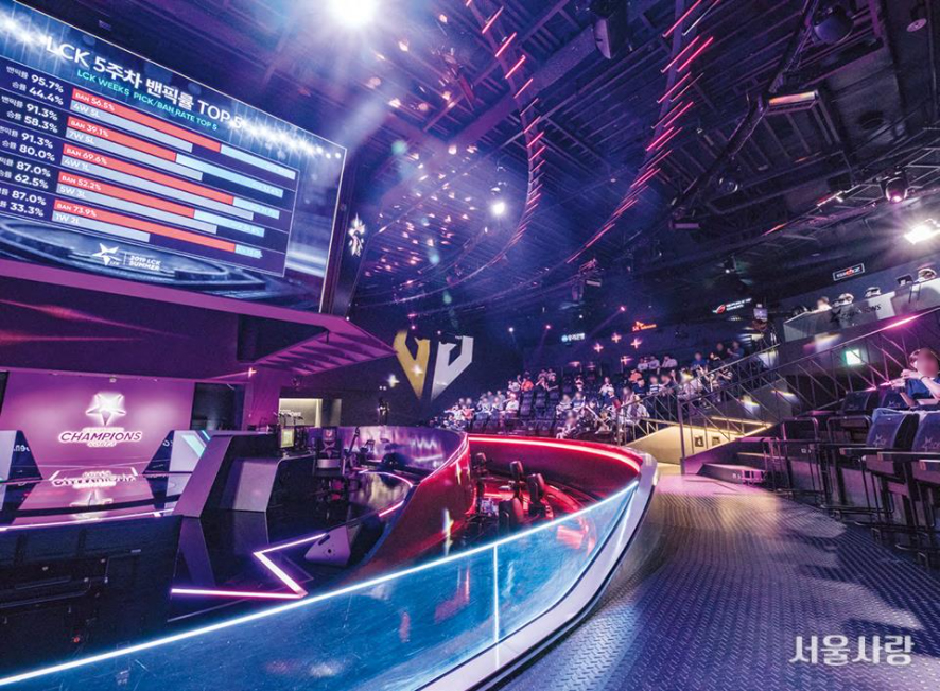
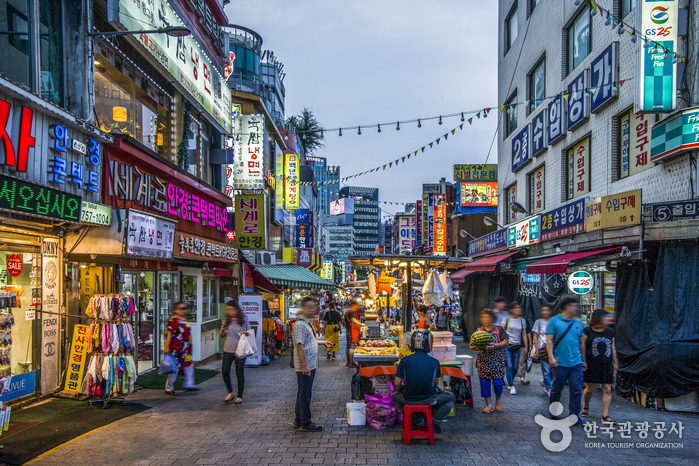
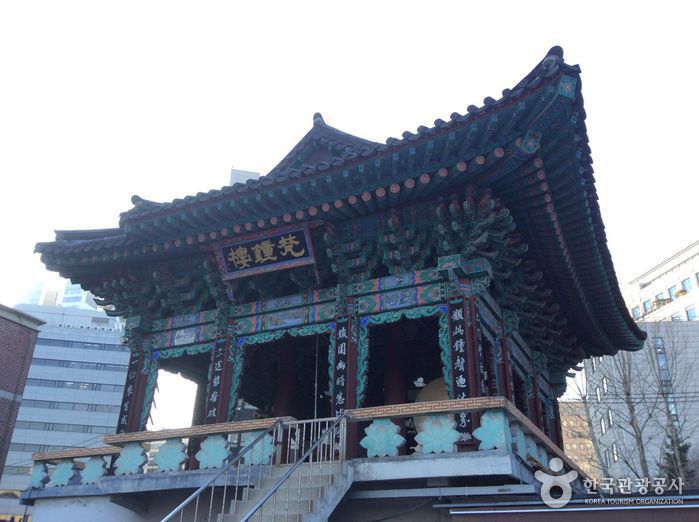
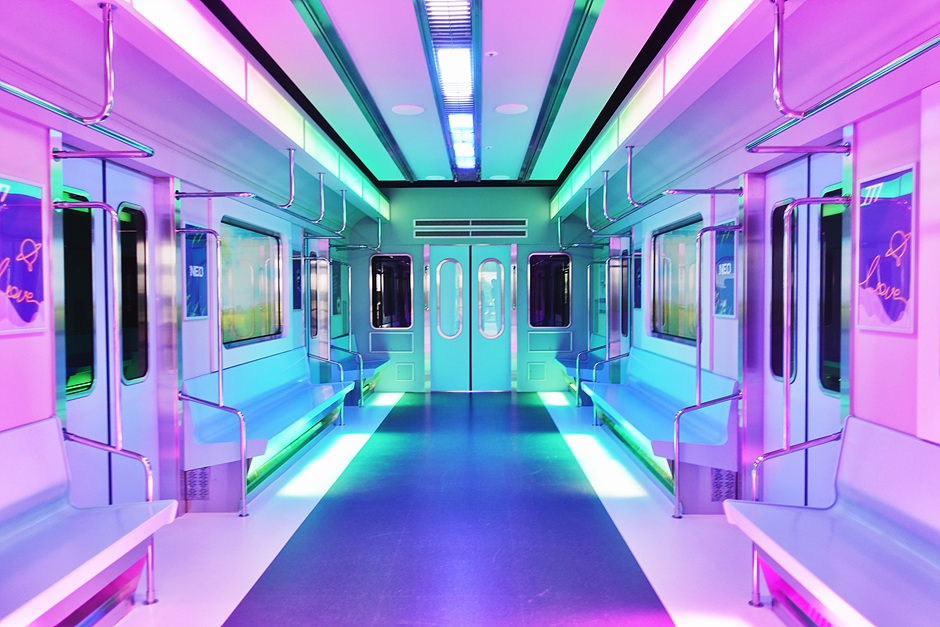

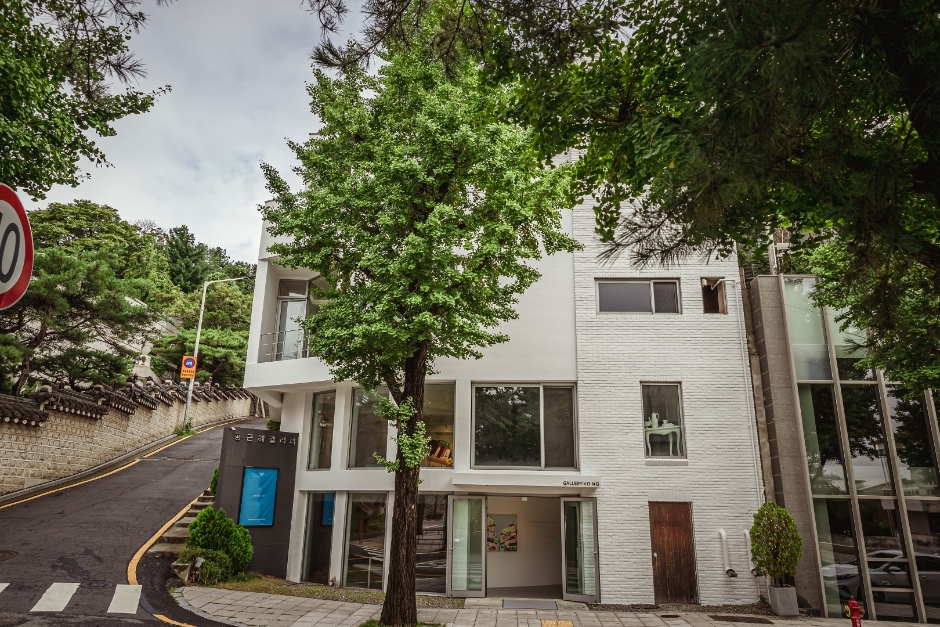
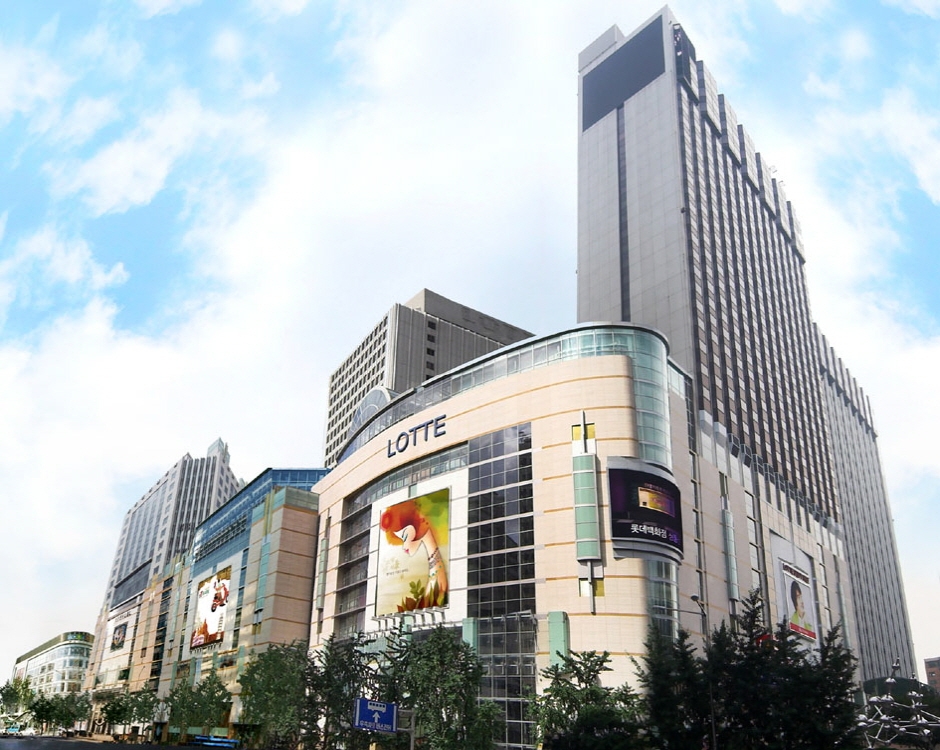
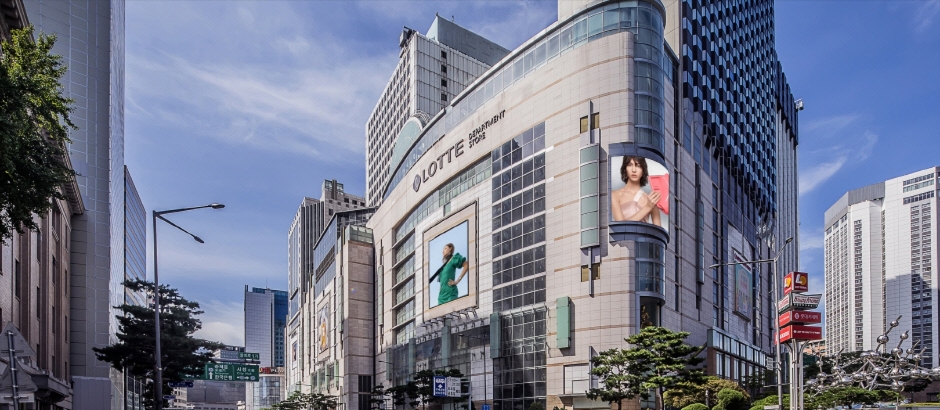
 Français
Français
 한국어
한국어 English
English 日本語
日本語 中文(简体)
中文(简体) Deutsch
Deutsch Español
Español Русский
Русский